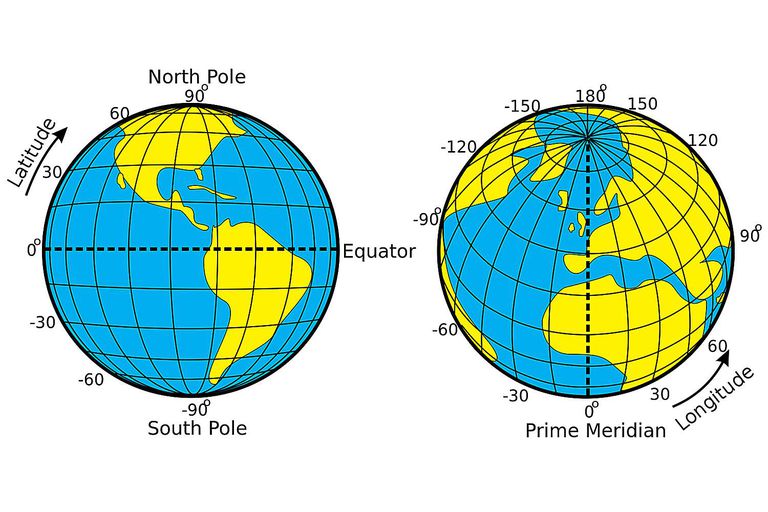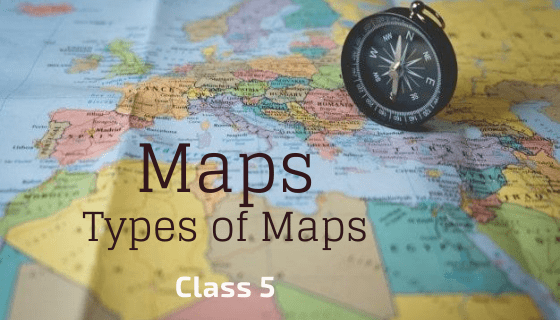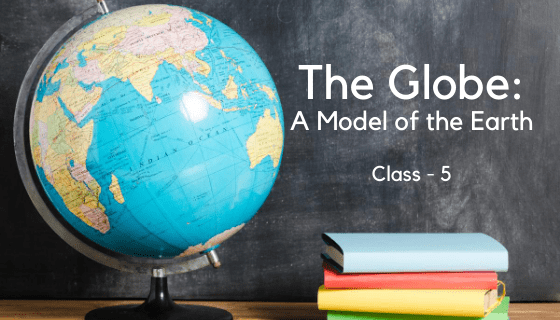Parallels and Meridians
Important for Class 5

Important facts on Parallels and Meridians:
- Parallels of Latitude: The parallels of latitude are the boundary lines of imaginary circles drawn around the earth. They run in the east-west direction and are parallel to each other. Parallels are of different length. Equator is the longest parallel and it divides the earth into the Northern Hemisphere and Southern Hemisphere.The parallels are numbered. The equator is marked zero degree. The North Pole and the South Pole is marked 90 degree North and 90 degree South respectively.Arctic Circle and Tropic of Cancer parallel lie between North Pole and the equator.Antarctic Circle and Tropic of Capricorn parallel lie between South Pole and the equator.
- Meridians of Longitude: Meridian is an imaginary semicircle that runs in the north-south direction and joins the two poles. All meridians are of the same length and meet at the poles.Prime Meridian is an imaginary line which divides the earth into eastern and western hemispheres. It is sometimes referred to as the Greenwich Meridian. The Prime Meridian which passes through Greenwich, England, is considered 0 degrees longitude.Places on different meridians have a time difference because they have sunrise and sunset at different times.
International Date Line: The longitude at 180 degrees from the Greenwich Time Line is known as International Date Line. It was designated in 1884. If you travel west from the International Date Line, you add a day, and if you travel east from the International Date Line, you subtract a day.
Questions and Answers on Parallels and Meridians
A. ANSWER THESE QUESTIONS.
- Name five important parallels of latitude?
- Define prime meridian. Why is it important?
- What is the difference between parallels and meridians?
- Why do places on different meridians have a time difference?
- What is the difference between latitudes and longitudes?
B. TRUE OR FALSE.
- The prime meridian divides the earth into two equal halves.
- The degree of equator is zero degree latitude.
- There is time difference between places on different meridians.
- Meridians are the boundary lines of imaginary circles drawn around the earth.
- 23 1/2° N Latitude is the Tropic of Capricorn.
- Prime meridian is also known as the Greenwich Meridian.
- The two parallels, the tropic of Capricorn and the Antarctic Circle lie between the equator and the South Pole.
C. FILL IN THE BLANKS.
- On a map, the ________ run in the east-west direction.
- Parallels are also called lines of _________.
- The parallels and meridians form a _________ that makes it easy to locate places.
- The ________ divides the earth into two equal halves.
- The tropic of Cancer is in the _______ hemisphere.
- To find a place on earth we must know its ________ and ________.
- The 90 degree N parallel is also known as the ________.
If you like this chapter – Parallels and Meridian for Class 5, please share it among your friends on WhatsApp and Facebook.
Some more important topics of CLASS 5







The quiz is nice.